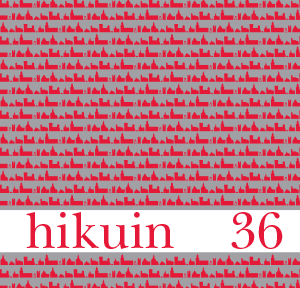Den Sorte Død som afspejlet i skandinavisk arkitektur og kunst
Resumé
The Black Death as reflected in Scandinavian Art and Architecture
By Ebbe Nyborg
There is a saying among architectural historians that a cathedral that had not been completed by the middle of the 14th century was at risk of never being finished at all. As it is well known this was the case in Cologne. The same almost total stop of building activities between ca. 1350 and the late 19th century is seen at Trondheim Cathedral in Norway (fig. 1-2). And in Denmark the works at Odense Cathedral and the nearby Cistercian church in Holme (fig. 3-4) came to a standstill ca. 1350 and were not resumed until well into the 15th century. Furthermore the buildings were only finished according to substantially reduced plans. The plague would have been at least partially responsible for this. Much would indicate that the plague especially affected Norway, where the whole stone-building tradition dwindled until the 16th century, and in Jutland (Western Denmark) where quite a number of deserted churches can be mapped (fig. 5). In the countryside only the rich Swedish island of Gotland had substantial building activity during the 14th century. But many of the works obviously came to a standstill without ever being resumed (fig. 6-7). Dendrochronology may link some of these standstills to the plague, whereas others would surely have had other (immediate) courses. In Scandinavia the macabre pictorial culture is widely represented by hundreds of crucifixes of pain (crucifixi dolorosi)(fig. 8) of which, however, a large number seems to antedate the plague. Classical memento mori scenes, such as the Dance of Death, the Wheel of Fortune (fig. 9), Frau Welt and the apocalyptic horsemen (fig. 10) can mostly be seen in the wealthier parts of Southern Scandinavia where a tradition of wall-paintings persisted. So-called transigraves with a life-size representation of the dead person lying as a worm-eaten body are not known until the 16th century (fig. 11) testifying to the long-reaching impact of the macabre culture.
Referencer
Bartholin, T.: Dendrokronologiens tilforlidelighed. Fornvännen 1998, s. 141-42.
Benedictow, O.J.: Svartedauen og senere pestepedemier i Norge. Pestepedemiens historie i Norge 1348-1654, Oslo 2002.
Binski, P.: Medieval Death. Ritual and Representation, London 1996.
Bråthen, A.: Dated wood from Gotland and the diocese of Skara, Højbjerg 1995.
Bråthen, A.: Kommentar till Erland Lagerlöfs debattinlägg “Dendrokronologin
och Gotlands kyrkor« og Kommentar till Thomas Bartholing artikel om dendrokronologins tilförlitlighet. Fornvännen 1997, s. 207-08 og 1998, s. 258-59.
Danmarks Kirker, udgivet af Nationalmuseet København 1933ff.
Danske Kalkmalerier 1-8 udgivet af Ulla Haastrup med flere, København 1985-92.
Der Kölner Dom im Jahrhundert seiner Vollendung 1-2. Katalog zur Ausstellung der Historischen Museen in der Josef-Haubrich-Kunsthalle Köln, udgivet af Hugo Borger, Köln 1980.
Ecclesia Nidrosiensis 1153-1557. Søkelys på Nidaroskirkens og Nidarosprovinsens historie, redigeret af Steinar Imsen, Trondheim 2003.
Egger, F.: Mittelalterliche Totentanzbilder. Todesreigen – Totentanz. Die Innerschweiz im Bannkreis barocker Todesvorstellungen, Luzern 1996, s. 9-33.
Eide, O., E.: Trondernes kirke fra 1200-talet eller fra senmiddelalderen? Trondernes 2005.
Ekroll, Ø.: Med kleber og kalk. Norsk steinbygging i mellomalderen 1050-1550, Oslo 1997.
Engberg, N.: Ødekirker. Arkæologiske udgravninger i Danmark 1999, København 2000, s. 7-17.
Fischer, G.: Domkirken i Trondheim. Kirkebyggeriet i Middelalderen I-II, Trondheim 1955-65.
Hauglid, R.: Om dendrokronologisk datering, Fornvännen 1998, s. 27-29.
Hoffmann, G.: Der Crucifixus dolorosus in St. Maria im Kapitol zu Köln. Neue Erkenntnisse nach seiner Restaurierung und ihre Bedeutung für die Kunst des frühen 14. Jahrhunderts. Colonia Romanica XV, 2000, s. 9-82.
Hædersdal, E.: Holme Klosterkirke. Bygningsarkæologiske Studier
90, København 1990, s. 7-32.
Jacobsson: Höggotisk Skulptur i gamla Linköpings stift, Visby 1995.
Johannsen, H. & B.B. Johannsen: Sct. Knuds Kirke. Otte kapitler af Odense Domkirkes Historie, Odense 2001.
Karlson, L.: Träskulpturen. Den gotiska konsten. Signums svenska konsthistoria, Lund 1996, s. 204-12.
Kjær, U.: Hverken fugl eller fisk. En usædvanlig kvindefremstilling i Skibby. Iconographisk Post 1985 nr. 1, s. 1-13.
Krefting, O.: Om Trondhjems Domkirke, Trondhjem 1899.
Kristensen, H. K,: Midelalderbyen Viborg, Århus 1987.
Körner, H.: Grabmonumente des Mittelalters, Darmstadt 1997.
Lagerlöv, E.: Dendrokronologin och Gotlands kyrker, Fornvännen 1997, s. 63-66.
Lexikon der Christlichen Ikonographie 1-8, udgivet af K. Kirschbaum, Rom, Freuburg, Basel, Wien 1968-72. (genoptryk som Sonderausgabe 1994).
Lovén, C.: Den första gotiseringen av Odense domkyrka. En omtolkning. Fortid og Nutid 2006, s. 127-135.
Lysaker, T.: Domkirken i Trondheim Bind III. Fra katedral til sognekirke 1537-1869, Oslo 1973.
Myrdal, J.: Digerdöden, pestvågor och ödeläggelse: Ett perspektiv på senmedeltidens Sverige, Stockholm 2003.
Nervander, E.: Dödsdansen i Ingå kyrka, Finsk Museum 1895, s. 65-82.
Nisbeth, Å.: Ängsjö kyrke och dess målingar, Stockholm 1988.
Nyborg, E.: Kirke og kloster. Da klinger i Muld… 25 års arkæologi i Danmark, redigeret af S. Hvass og B. Storgaard, Århus 1993, s. 242-47.
Poulsen N-J.: Randbøl sogns bebyggelse ca. 1570 til 1700. Et sydjysk sogn før og efter svenskekrigene. Landbohistorisk Tidsskrift 2. rk. IV, s. 125-181.
Rosenfeld, H.: Der mittelalterliche Totentanz – Entwicklund – Bedeutung. Köln Wien 1974.
Rouiller, J-L.; Les sépultures des seigneurs de la Sarraz, i L‘ abbaye Prémontrée du Lac de Joux des origins au XIVe siécle, udgivet af C. Martinet, Lousanne 1994.
Sveriges Kyrker, udgivet af Riksantikvarieämbetet och Vitterhets Historie och Antikvitetsakademien, Stockholm 1912ff.
Ullén, M.: Gotikens Kyrkobyggande. Den gotiska konsten. Signums svenske konsthistoria, Lund 1996.
Ulsig, E: Pest og befolkningsnedgang i Danmark, Historisk Tidsskrift (dansk) 1991, s. 21-43.
Varming., J.C.: Holme Klosterkirke. Nye tanker omkring kirkens bygningshistorie og klosterbyggeriets begyndelse. Bygningsarkæologiske Studier 91, København 1991, s. 7-12.
Vellev, J.: Asmild Klosterkirke i 900 år, Højbjerg 1990.
Wenningsted-Torgard, S.: Krucifixe des 14. Jahrhunderts auf Lolland-Falster und in Nordjütland. Figur ind Raum. Mittelalterliche Holzbildwerke im historischen und kunstgeographischen Kontext, udgivet af Uwe Albrecht og Jan von Bonsdorff i samarbejde med Annette Henning, Berlin 1994.
Wienberg, J.: Den gotiske labyrint. Middelalderen og kirkerne i Danmark, Stockholm 1993.
Wienberg, J.: Gotlands Guldålder – kyrkor, konjunkturer och korståg. Från Stad till land. En medeltidsarkæologisk resa tillägnat Hans Andersson, Stockholm 2001, s. 229-40.
Wolff, A.: Der Kölner Dom, Köln 1974, 3. udg. Köln 1982.
Downloads
Publiceret
Citation/Eksport
Nummer
Sektion
Licens
Forfatter og Forlag.





